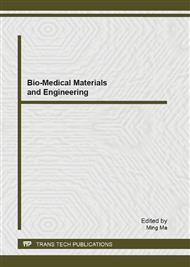p.13
p.18
p.23
p.27
p.31
p.38
p.44
p.49
p.54
Research on the Performances of Automotive Seating Fabrics
Abstract:
This paper was written based on the testing of resistance to stretch & set and bond strength for 10 different kinds of automotive seating fabrics and their corresponding surface monolayer fabrics, according to the standard GMW3211FZT01034-2008/FZT70006-2004GMW3220. And the results indicated that, resistance to stretch & set of knitted automotive seating fabrics decreased and that of woven fabrics increased after composited; bond strength of fabric/sponge was higher than that of sponge/bottom, and bond strength of seating fabrics which had different structures were also different. Studying the performance of automotive seating fabrics had important implications on the production of seating fabrics, and the improvement of product quality and innovation in future.
Info:
Periodical:
Pages:
31-37
Citation:
Online since:
August 2013
Authors:
Price:
Сopyright:
© 2013 Trans Tech Publications Ltd. All Rights Reserved
Share:
Citation:


